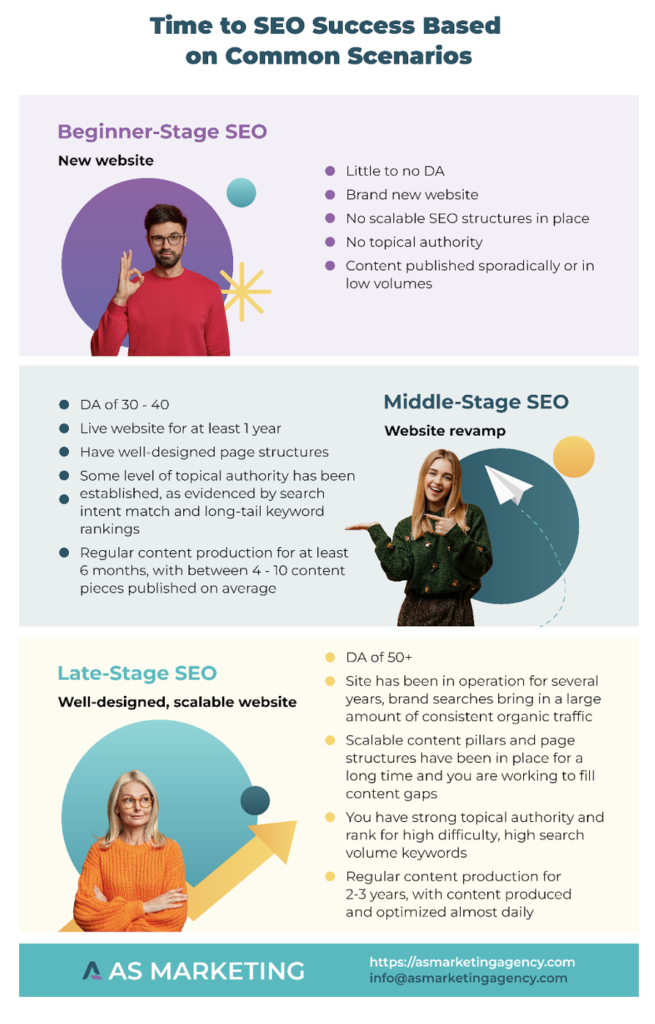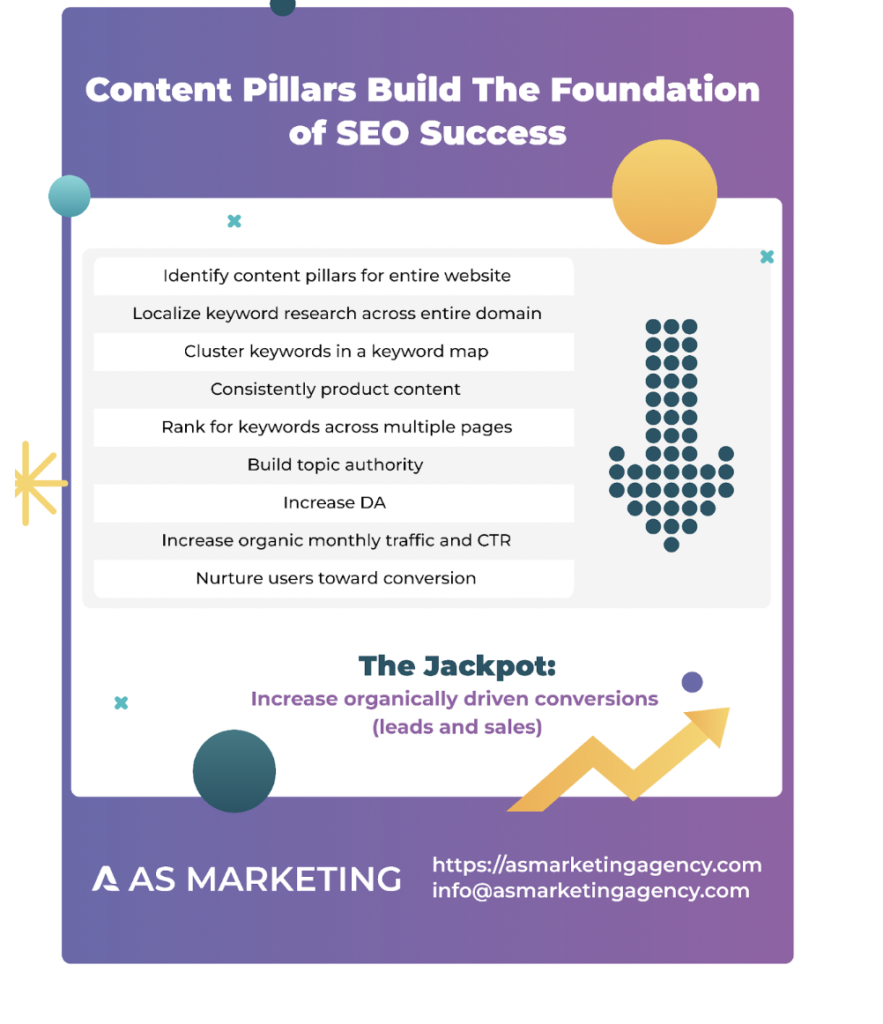Learning SEO from scratch is like directly hurling yourself into a black hole: few people understand it, yet the mystery of how it functions constantly pervades our thoughts.
When you first decide to take this plunge of insanity in the black hole, unsure whether or not you’ll come out the other end, the first and most important question remains:
Where do I start?
As an SEO myself who learned from level zero and spent countless hours being given wrong information, one thing’s for certain: most SEO beginner guides barely scratch the surface.
They’re often completely vague, don’t provide realistic examples, and completely miss out on how SEO ties in to business growth.
Despite the information chaos, there are a few lessons I’ve learned after working on many different types of SEO projects over the years.
To shed some light on the black hole of SEO and ensure the safety of your journey, here are some crucial points about SEO that beginner guides often miss and how you can apply this knowledge to your own SEO strategy.
8 Powerful yet often forgotten SEO tactics
What I won’t cover in this guide is what SEO is and how the algorithm technically works. If you’re interested in that information, Search Engine Journal has a great (and from my perspective accurate) overview. Instead, I’m going straight to the crucial SEO tactics you need to succeed.
1. Understanding domain KPIs & website maturity
One thing that a lot of beginner guides seem to imply is that if you follow their guidelines, you’ll quickly see success…but what does that SEO success actually look like and how long does it take to get there?
To answer those questions, you need to consider where you’re at within three basic SEO scenarios:
- You’ve got a brand new website (beginner-stage SEO): If you have no domain authority (DA), very little organic traffic, and no established backlink profile, you’re starting SEO from scratch. And even more importantly, you need to be prepared to truly commit yourself time-wise and financially to really make things happen. Even with a consistent approach, noticeable outcomes will often take at least 6 months to see.
- You need to revamp your website (beginner or middle-stage SEO): In many cases, the goal of revamping a website is to remove technical issues and improve SEO processes quickly. However, when there are major issues like incorrect redirects or poorly designed pages, the foundation can easily be lost. So, when working on a website migration or design revamp, you need to take it ultra seriously. If you’re in this scenario, please always work with a technical SEO to ensure you don’t add unnecessary obstacles to achieving SEO success.
- You’ve got a good website and are ready to scale (middle-stage or late-stage SEO): This is unfortunately how many SEO beginner guides describe the process, but it’s simply not the case for most businesses. The websites who meet late-stage SEO conditions have either A) been around for a long time and are a well-known brand and/or B) have a massive content budget and have a clear long-term commitment to maintain SEO success. Despite this, there are methods to achieving SEO success without a huge budget, which I’ll go over later.
In order to determine which scenario your SEO strategy falls into, the below image outlines the main criteria:

2. Build content pillars to drive SEO success
Many beginners guides focus purely on keywords. While keywords are of course still essential to play the game, content pillars are what truly wins over time. Content pillars stem from one specific topic that can be broken down into derivative sections of content, also known as “content clusters”.
From my perspective, content pillars are the single most important factor for strengthening domain topical authority.
Creating content pillars involves talking about one topic from a wide array of angles in order to provide value to your audience. In turn, this shows Google that you’re a credible, reliable source of information, thereby increasing your authority. The more authority you have with Google, the higher the chance of appearing in SERPs for several target keywords across multiple pages of similar topics.
After working on many different SEO strategies, here’s the process I’ve come to that provides the best SEO:

3. Aligning search intent with purchase intent
A good chunk of beginner’s guides don’t go over how integral understanding the sales funnel is to SEO success. The goal of SEO is to get in front of potential customers by appearing in organic SERPs, address their pain points, and articulate solutions that work for them in order to nurture them toward conversion – emphasis on conversion. In order to understand where a user might be in your specific sales funnel, you can check the “search intent” behind the phrases they use:
- ToFu (top of funnel) content is a numbers game. You want to cast a wide net to help explain what your product/service is and how it works. This usually means more generalized types of keywords like “what is x”.
- MoFu (middle of funnel) addresses people who are maybe considering purchasing a product or service. They look at reviews, comparison, or “best X thing” type keywords.
- BoFu (bottom of funnel) aims to address those prospects who are ready to take action and make a purchase. To reach them, you need targeted keywords that describe your core products or services exactly how you offer them.
Ironically, despite the fact that most people want to use SEO to drive conversions, most companies focus their time and resources on ToFu content and forget to rank for high purchase keywords that directly describe their products/services.
4. Defining search competitors
Although there can be overlap, there’s a difference between business competitors and organic search competitors. While business competitors offer the same products or services, search competitors rank for the same general topics that you do. This means that in the SEO world, you could easily have an entirely different set of competitors than you look at from a holistic business perspective.
For example, a company trying to rank for “inbound marketing” could be a business that sells inbound marketing consulting services. However, it could also just as easily be HubSpot. But a marketing agency and HubSpot may not necessarily be direct business competitors.
When it comes to applying this to your SEO strategy, manually reviewing SERPs when choosing your keywords is essential. Reviewing SERPs also provides you with more information on page type needed, word count, and how Google perceives specific keyword intent.
5. Identifying, clustering, and mapping keywords
Many beginner’s SEO guides talk about the importance of keyword research, but they don’t go into much detail about what that entails and how to choose them. Ideally, there are three steps to keyword research: identifying, clustering, and mapping.
- Identify relevant keywords – perform keyword research and analyze the results. You want to choose the ones most relevant to your business and overall content strategy. Some tips for this include:
- Choosing keywords that have a monthly search volume of at least 10
- Incorporating a mix of BoFu, MoFu, and ToFu keywords across different pages
- Prioritizing keywords that can be integrated naturally into copy and match what you want to say in your content
- Create keyword clusters – next you want to create keyword clusters based on content pillars. Each cluster should focus on a specific search intent based on where the user is in the sales funnel and be somehow semantically related.
- Build out keyword mapping – organize your keyword clusters into specific content pieces to form the basis of your SEO strategy.
Pro tip: my team and I tend to use this process for between 25 – 50 content pieces at once. While it does require more upfront work, when you go into content production, you have this keyword map as a database, which makes setting priorities a whole lot easier. When you try to do this process for content on a piece by piece basis, it takes 3x longer to identify the right search intent to match keywords (trust me, I know from experience). Furthermore, you also reduce the impact the content has on the topical authority, because it’s not based on a content pillar.
[Ebook] Technical SEO for non-technical thinkers
6. Writing and designing high-quality content
I’m not saying that SEO guides for beginners don’t focus on the importance of content creation, but they often overlook the end goals for both the business and the user. When it comes to SEO, it’s easy to get too technical and forget that we’re writing for real people. But we SEOs want those real people to become customers, so never forget that there’s a real, living breathing person behind the screen.
No matter what your role in SEO is, good content that helps your audience should always be the core focus in creation. Riddling meaningless content with “SEO stuff” is a waste of time, especially in regard to keyword density (in fact, just ignore keyword density altogether, topical authority is way more important).
The real results will come when you build your content strategically using good keywords. Limit each piece of content to a few targeted keywords that match search intent. This makes content creation easier for the topic at hand, more likely to be grammatically correct, and provides more value to the reader.
7. Scaling SEO processes with SEO operations
SEO isn’t something that you just “finish.” Nor is it a job built for one person. SEO is a dynamic component of ongoing business success that requires a team of people efficiently working together over time. At the bare minimum, you need an SEO strategist, writer, graphic designer, developer, and technical SEO expert.
Finding a recipe that works for everyone is all about trial and error. You’ll need to run quality assurance (QA) testing and create templates to ensure work is consistently completed.
Randomly publishing content won’t get you very far. Consistency is key if you want SEO to work.
Within my team, we use an SEO content production process like this:
- SEO strategist creates keyword map
- SEO strategist creates content brief for content writer
- Content writer writes full draft
- Copyeditor reviews and edits full draft
- SEO strategist does final SEO check
- Graphic designer creates wireframe for full draft
- SEO strategist does final SEO check
- SEO strategist briefs developer on new content
- Developer creates page
- SEO strategist does final SEO check
- Once content is live, SEO strategist updates SEO tracking and reporting for new content
- SEO strategist monitors technical issues and page performance
- SEO strategist flags changes or optimizations needed
And of course, when this process involves consulting for our clients, there are further steps in between for them to give feedback and for us to make changes. With so many steps and people involved, consistent QA processes and templates are essential to ensuring that SEO scales efficiently.
8. Setting SEO priorities to drive business growth
If there’s one thing above all that I suggest for you to remember from this article, keep this in mind:
SEO is about attracting quality prospects to your website and nurturing them toward conversion.
If the traffic isn’t quality and you don’t get conversions, then your efforts are wasted.
Always focus on positioning your SEO efforts on generating leads or conversions (and ideally ROI). This gives you a way to analyze your efforts and calculate results over time.
Once you implement your strategy, give it at least 6 months before scheduling a review. Some industries, like B2B, are slower because they have a longer sales cycle. But in almost all industries, business growth from SEO best practices won’t happen much faster than that.
To improve your SEO skills, practice on real websites
Truly learning SEO comes from getting your hands dirty and diving into the nitty gritty with a real website and live data. So, don’t spend too much time reading blogs about how to do SEO. It can slow your progress and who knows whether the information you’re reading is even accurate or up-to-date.
I was even incorrectly taught how to do SEO when I first started. They wanted me to do things like use only high search volume or two-word keywords that didn’t match what the website was talking about. The words “keyword mapping” were sadly never mentioned. Although I didn’t reinvent the wheel with anything I’ve written here, I hope it gives you a shortcut to the SEO success of your dreams.

